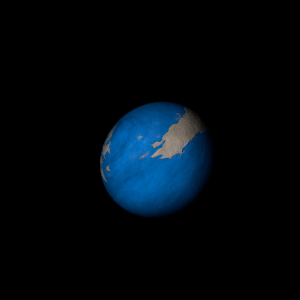|
|
Space Astro
|
Info for exoplanet "Thrymr Heke"
| Scientific (actual) data |
|---|
| Planet | HD 23472 e |
| Planet status | Confirmed |
| Planet mass | 0.00227 |
| Radius | 0.07298 |
| Orbital period | 7.90754 |
| Semi major axis | 0.068 |
| Orbit eccentricity | 0.07 |
| Inclination | 88.63 |
| Discovered | 2022 |
| Updated | 2022-10-22 |
| Omega | 46 |
| Impact parameter | 0.5 |
| K | 0.3 |
| Temperature (kelvin) | 723 |
| Publication | Published in a refereed paper |
| Detection type | Primary Transit |
| Mass detection type | Radial Velocity |
| Radius detection type | Primary Transit |
| Alternate names | TOI-174 e |
| Star name | HD 23472 |
| Right ascension | 55.46° |
| Declination | -62.77° |
| Mag v | 9.7 |
| Star distance | 39.1 |
| Star mass | 0.75 |
| Star radius | 0.73 |
| Star sp type | K3.5V |
| Star alternate names | TOI-174 |
| Wikipedia article | HD 23472 e |
Back
| |
| Fictional info (?) |
|---|
| Suggested name | Thrymr Heke |
| Planet type | Cold planet |
| Thrymr Heke is the fourth planet from HD 23472 and the second-smallest planet in its solar system. It has the longest rotation period (445 days) of any planet in its solar system and rotates in the opposite direction to most other planets. It is the second-brightest natural object in the night sky after Herpuck-tode, reaching an apparent magnitude of -5 - bright enough to cast shadows at night and, often, visible to the naked eye in broad daylight.
This planet is named after the deity Thrymr Heke, the spirit of love and beauty.
When viewed from Herpuck-tode, this proximity to HD 23472 means the planet can only be seen near the western or eastern horizon during the early evening or early morning.
Thrymr Heke is gravitationally locked with HD 23472 in a 4:3 spin-orbit resonance, and rotates in a way that is unique in its solar system. |
| Atmosphere | Carbonyl sulfide | 99% |
| Atmospheric pressure | 40 bar |
 |
| No known satellites |
| Google search for Thrymr heke |
|
Website by Joachim Michaelis
|
|
|
|